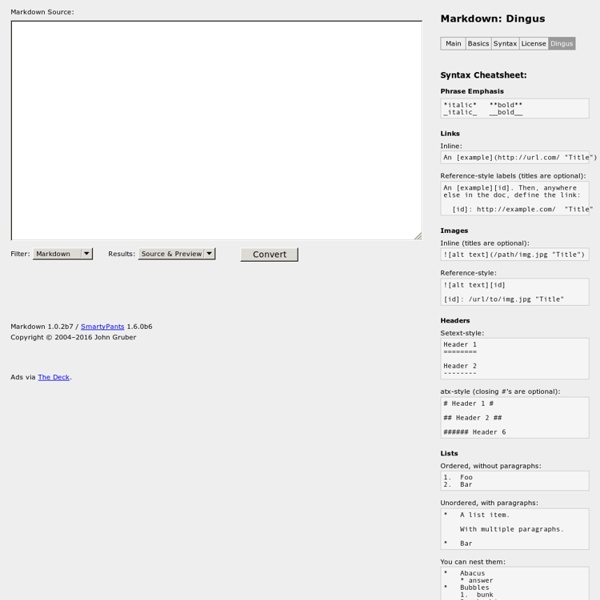



Getting Started with Ruby on Heroku Introduction This tutorial will have you deploying a Ruby app in minutes. Hang on for a few more minutes to learn how it all works, so you can make the most out of Heroku. The tutorial assumes that you have: a free Heroku accountRuby 2.2.3 installed - see the installation guides for Ruby and Rails on OS X, Windows and LinuxBundler installed - run gem install bundler If you are running on Windows, consider following Getting Started with Ruby on Heroku (Microsoft Windows) instead - it uses a more Windows-friendly local tooling. If you don’t follow the Windows guide, note that you cannot run bundle install as you may need to install OpenSSL and the Puma web server manually. First download OpenSSL. Verify the file is in the correct location: $ dir c:\opensslbin include lib ssl Now run: $ gem install puma -- --with-opt-dir=c:\openssl Once this finishes run: Set up In this step you will install the Heroku Toolbelt. Download the Heroku Toolbelt $ heroku login Enter your Heroku credentials. Prepare the app
Markdown Live Preview Markdown Syntax Documentation Note: This document is itself written using Markdown; you can see the source for it by adding ‘.text’ to the URL. Overview Philosophy Markdown is intended to be as easy-to-read and easy-to-write as is feasible. Readability, however, is emphasized above all else. To this end, Markdown’s syntax is comprised entirely of punctuation characters, which punctuation characters have been carefully chosen so as to look like what they mean. Inline HTML Markdown’s syntax is intended for one purpose: to be used as a format for writing for the web. Markdown is not a replacement for HTML, or even close to it. For any markup that is not covered by Markdown’s syntax, you simply use HTML itself. The only restrictions are that block-level HTML elements — e.g. For example, to add an HTML table to a Markdown article: This is a regular paragraph. Note that Markdown formatting syntax is not processed within block-level HTML tags. Span-level HTML tags — e.g. Automatic Escaping for Special Characters © 4 < 5 1.
Heroku | Cloud Application Platform Online Markdown Editor This page lets you create HTML by entering text in a simple format that's easy to read and write. Type Markdown text in the left windowSee the HTML in the right Markdown is a lightweight markup language based on the formatting conventions that people naturally use in email. As John Gruber writes on the Markdown site: The overriding design goal for Markdown's formatting syntax is to make it as readable as possible. This document is written in Markdown; you can see the plain-text version on the left. Collaboration Made Simple with Bracket Notation While writing, I like to keep things simple. While I don’t go to the extremes of Khoi Vinh’s punishing Blockwriter, I generally use an editor that can’t even make text bold. When I write, it’s just the raw text and me, mano a mano. Must of my collaborators are the same way. The solution is simply three sets of square brackets and some customs: the first set of brackets denotes deletion, the second set denotes addition, and the third set denotes a comment. An editor might revise the sentence to: The edits are deciphered like so: the[ir][y're]: “their” was used when “they’re” was meant. After you use bracket notation for even a little bit, the order of the brackets will become second nature. This might be edited as so: This looks a bit scary at the outset (the density of comments is pretty high), but it is easy to follow the edits: [silver]: Delete “silver”.[-][ ]: Delete the hyphen and add a space. Thus, if all changes were accepted, the edited sentence would be:
exercism.io online markdown viewer PullReview | Automated Code Review for Ruby in GitHub, BitBucket and GitLab Markdown Markdown es un lenguaje de marcado ligero creado originalmente por John Gruber [1] y Aaron Swartz [2] que trata de conseguir la máxima legibilidad y "publicabilidad" tanto en sus forma de entrada como de salida, inspirándose en muchas convenciones existentes para marcar mensajes de correo electrónico usando texto plano. Markdown convierte el texto marcado en documentos XHTML bien formados, reemplazando el signo 'menor que' ('<') y los ampersands por sus correspondientes referencias de entidad de caracteres. Markdown fue implementado originariamente en Perl por Gruber, pero desde entonces ha sido traducido a multitud de lenguajes de programación, incluyendo PHP, Python, Ruby, Java y Common Lisp. Ejemplos de sintaxis[editar] Lo que sigue no es un listado exhaustivo de la sintaxis de Markdown. Texto con énfasis: *énfasis* (p.e., cursiva) **énfasis fuerte** (p.e., negrita) Código: `código` ``` Código en varias lineas ``` Listas: * Un elemento en una lista no ordenada * Otro elemento en una lista !